-
Posts
884 -
Joined
-
Last visited
-
Days Won
7
Content Type
Profiles
Forums
Blogs
Gallery
Events
Store
Posts posted by Antonio Prieto
-
-
Trank you. A new ribbon for update the ribbon chart
0 -
Thank you
Yes, it is similar to the Spanish uniforms, but I do not know this combination of a collar emblem and this type of stars, formed by two superimposed four-pointed ones in the Spanish Navy0 -
-
Norwegian Army (ground)
0 -
Any know any of the awards of this Tunisian Air Force officer ribbon bar?
The last is the Military Medal
Thank you
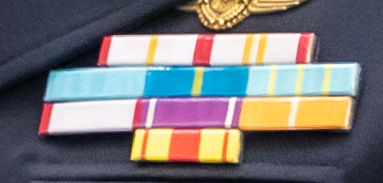 0
0 -
For "gerente" perhaps: Geschäftsführer, Geschäfsleiter, Disponent, Wervalter
For "apoderado" perhaps: M;anager, bevollmächrigter
"Consejero jurídico": Rechtsberater
Göring (18-7-1938) and Ribbentrop (11-6-1940)

Tangier, March 1941. The High Commissioner, General Asensio, and the Counselor of the Reich Embassy in Madrid, Dr. Heberlein (visible the Plaque of the Commander with the Plaque of the Great Imperial Order of the Red Arrows)
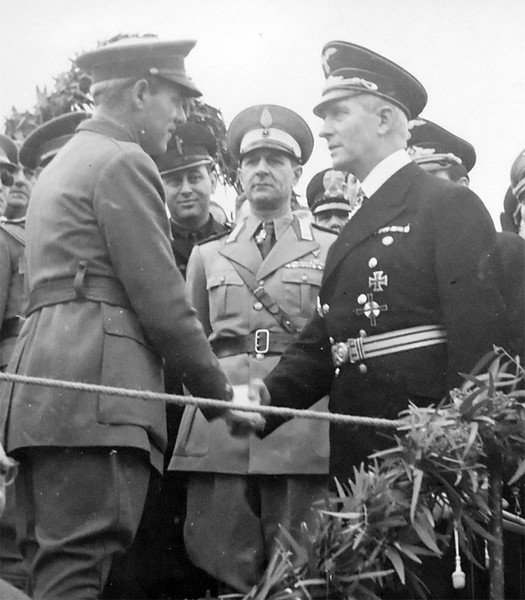
General Asensio, High Commissioner, greeting the consul of Tetouan, Mr. Richter, and Mr. Heberlein, counselor of the Embassy in Madrid, who wears a plaque of Commander of the Yugo and the Arrows
 0
0 -
Thak you. Fantastic relation
I can can also get the image of the selected categories
https://coleccionesmilitares.com/medallas/texto/yugoflecha.htm
Grand Collar

Commander with plaque

Commander (neck badge)
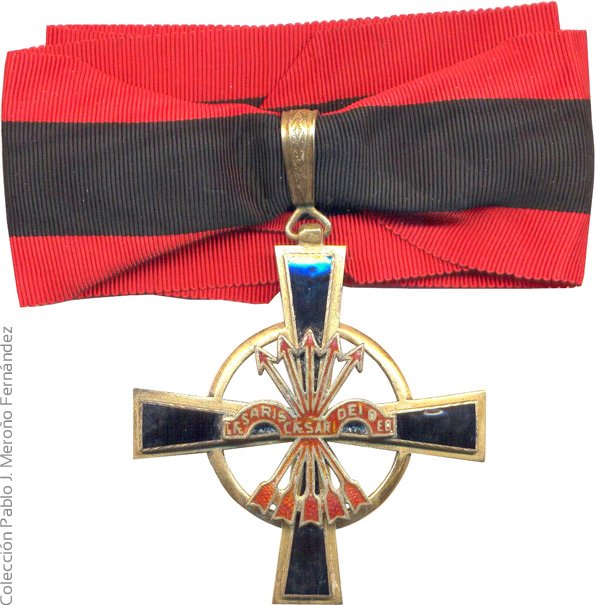
Medal
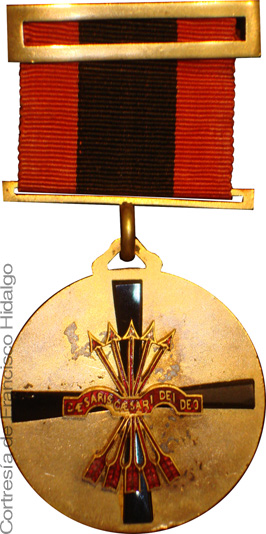 0
0 -
Ribbon plate updated

The spanish medal over the uniform
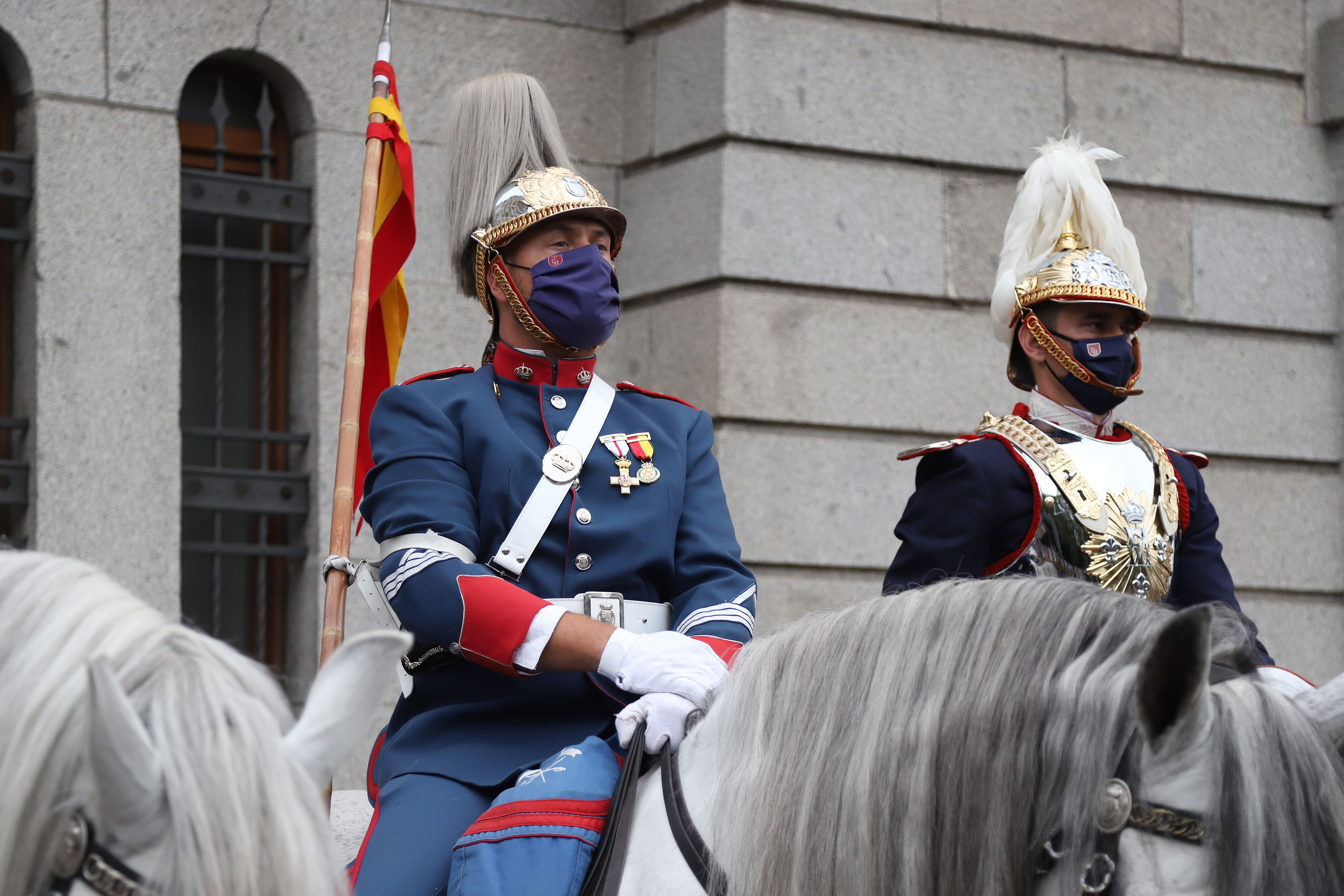 2
2 -
Yes. I know. The other in the pocket is the combined four Spanish Chivalry Orders of Montesa, Calatrava, Santiago and Alcantara
 0
0 -
Muchas gracias
Thank you for the info
Here the uniform
0 -
I would like to confirm the uniform that King Alfonso XIII of Spain wears in this portrait.
I know that he visited Vienna in 1905 and the press indicated that he wore the uniform of a Hungarian colonel.
In the same way I would like to confirm the decorations. The sash looks like that of Saint Stephan . On the neck I don't know if it's the Teutonic Mariencross
Any information is appreciated
0 -
Thank you
At least 32 insignia of this order were awarded to people associated with the Arab world between 1928 and 1956, including Arabia, Lebanon and Syria
Another option is that the fabrication is Italian or Spanish and that it was distributed in Egypt by this firm.
1 -
They tell me that the translation of this inscription is FACTORY OF MEDALS AND RECOGNITIONS OF EGYPT / KINGDOM OF EGYPT / TAOUFIK BAI
Corresponds to a plaque of the Mehdauia Order of the Spanish Protectorate of Morocco between 1926 and 1956, sold in emedals
Could someone confirm it for me?
If yes, do you know anything about this manufacturer Taoufik Bai?Thank you
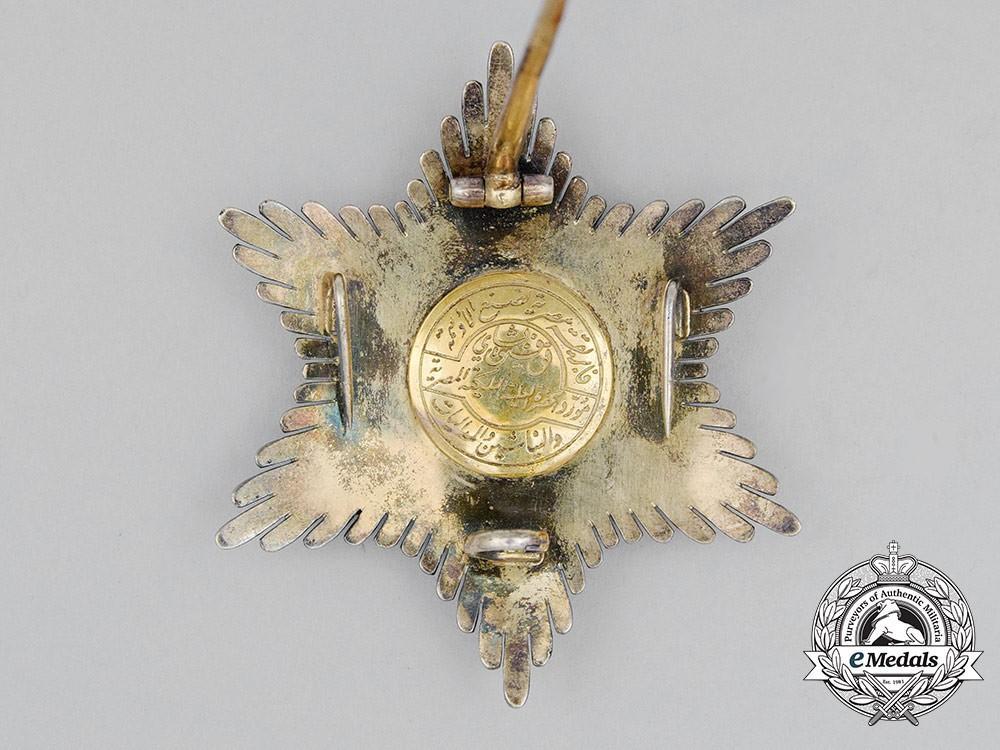 0
0 -
It is a plate for shoulder strap regulated in the 1943 uniformity regulation
The shoulder strap is made up of a five-centimeter-wide gold braid, forming the embroidery with alternating castles and lions. The gallon is lined with red cloth.
On the gallon, and to fix it in the center of the chest, an elliptical sheet of fire-gilded brass is placed. The dimensions of the axes of the same are eight and five and a half centimeters, respectively. It has a die-cut, in its center and with its enamel colors, the emblem of the Army
1 -
This is what the creation order says
The central part of the insignia is made up of an enameled circle, in which the sunset is represented, that is, El Mogreb, reflected in a blue-green sea. Circumscribed to this circle is a strip, also made of enamel and Prussian blue, limited by a golden border. Everything described above is enclosed in a Solomonic ring.
The ribbon from which the decoration hangs is green, with a white central stripe.
On the reverse, in a circle of white enamel, the following Arabic inscription reads: Muley el Mehdi Ben Ismail Ben Mohamed, may God glorify him. The plaque for Commanders and Grand Crosses (or their equivalents) is identical, with the only difference that it goes on a silver or gold disk, depending on the category, and with the same ornamentation motifs, but enlarged, without any inscription.1 -
As a complement to the thread Spanish-Moroccan Mehdauia Order awarded to Kriegsmarine admirals opened by Kriegsmarine Admiral, I propose this new one to include photographs (portraits, ribbon bars or gropus) and data with non-Spanish recipients of this order
Between 1926 and 1956 some 10,378 awards of this Order were awarded.
Not counting those to Moroccans (some 1,700), 571 concessions went to foreigners, mainly Italians (230), Germans (130) and Portuguese (83). Also French, British, from Latin American countries (Argentina, Dominican Republic, Uruguay, Cuba or Puerto Rico) and others (Syria, Arabia, Lebanon, Egypt, Philippines, Norway, Japan, Greece, Holland and the United States).
Thanks
1 -
Thanks to all
Tou can see the categories at;
https://coleccionesmilitares.com/medallas/texto/mehdauia.htm
Rifaat (knight) and variant only il silver nor enamelled
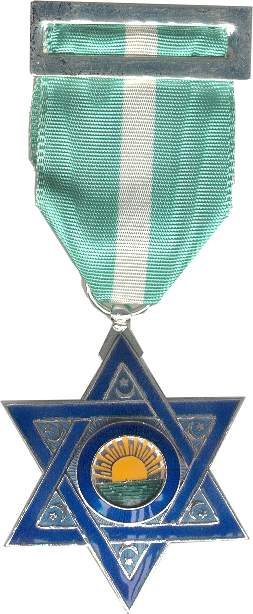
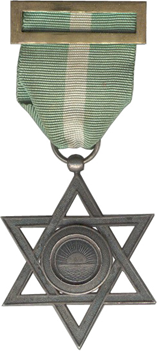
Litizas (Officer)
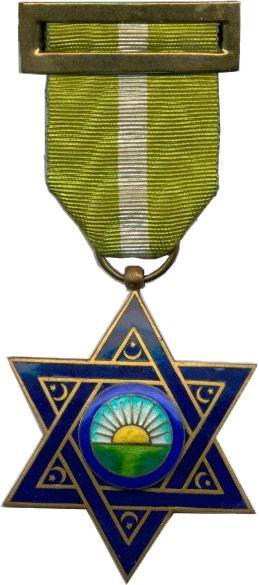
Saada (commander)
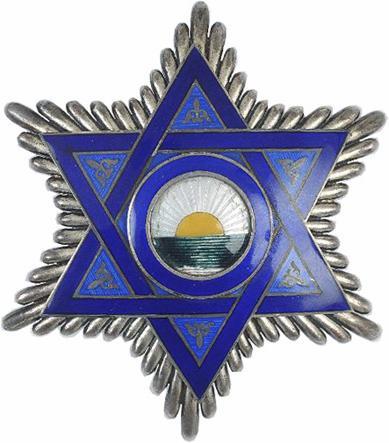
Fajama (Knight Commander)

Bronze insignia
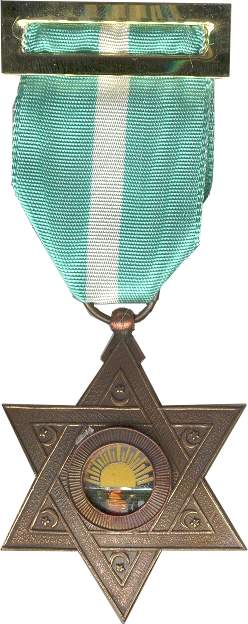 1
1 -
51 minutes ago, 922F said:
Another aspect of this Order concerns insignia size. At least Spanish and Italian firms manufactured stars and badges. My notes indicate that most Spanish [Castells and perhaps Cejalvo] stars measure about 55 to 62 mm diameter with 42 mm badges. Italian [marked Gardino and Johnson plus not verified Alberti] stars size from about 75 mm to 80 mm with badges from 46 to 55 mm diameter at widest points. Antonio already indicated that Saada stars are silver and Fajama and Sumú-u gilt. I find no reference to grant of a star with the collar--Antonio have you an idea?
It appears that these German recipients wear larger size stars.
Statutes indicate, as Antonio noted, that heads of state receive the Kil-lada [collar] grade. Kai Meyer of Copenhagen had 4 Mehdauia collars as well as 2 collars of the Order of Hasania, another Spanish Moroccan Order, in his collection in 1980. Meyer owned an award manufacturing firm; these collars may have been acquired from excess stock of his Spanish colleagues. He did, however, buy a tremendous number of awards from dealers as well as directly from awardees, some of whom would NOT permit identification.
Thank you for this informations
The lmage of the collar in auction some years ago. The collar is not with a plaque or star
The first pieces from the late twenties and early thirties were from Cealvo.
I have never seen a real piece of the collar of the Hasania Order. No less than two had this Kai Meyer whom I unfortunately do not know
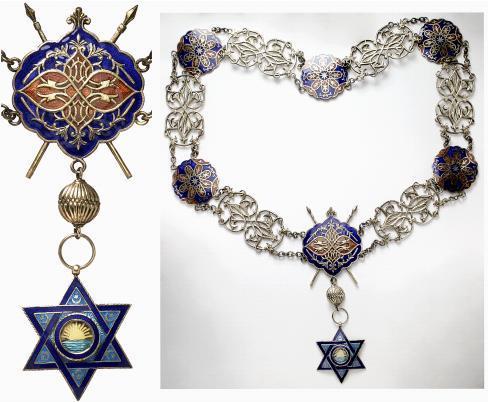 1
1 -
The granting of Grand Cross of the Order of Naval Merit to Canaris. must be prior to October 1937. I do not know the specific date, but at the end of this month it had not been awarded, because they did not have insignia available and that only would get from January 1938. Perhaps it would be imposed in mid-February 1938 on a visit to Burgos
0 -
Of course the regulation is clear regarding the position of the badges. It is possible that whoever imposed them was not very clear about it, or that they simply made a mistake when putting them
I understand that it refers to the Collar of the Order created in 1937 (The category Kil-lada (Great Collar) of the order of the Mehdauia is created, which can only be granted to Heads of State).Years ago one of them was put up for auction.
We only know of three concessions: that of Khalifa Muley el Hassan, that of Francisco Franco, Caudillo of Spain and Head of State, granted in April 1938, and that of Antonio Oscar de Fragoso Carmona, president of the Portuguese Republic, granted in June of the same year.
1 -
A new mistake. The Comendador de número only is a plaque, not a neck badge
The Mehdauia Order comprises the following five classes:
First. Rifaat (Knight). In this category, both the Solomonic ring and the ornaments will be silver. It is suspended from the left side of the chest.
Second. Litizás (Officer). It differs from the previous one only in that the Solomonic ring and ornamentation motifs will be gold, as well as the contours. Also hang on the left side.
Third. Saada (Commander). The same insignia, only set in a silver disk, and pinned to the left side of the chest.
Quarter. Fajama (Commander of number). Like the previous one, and set in a gold disc, hanging on the right side of the chest.
Fifth. Sumú-u (Grand Cross). Identical to the previous one and attached to the left side, also wearing a sash that crosses the chest from right to left and from whose end hangs the second class insignia.Between 1926 and 1956 some 10,378 awards of this Order were awarded.
Not counting those to Moroccans (some 1,700), 571 concessions went to foreigners, mainly Italians (230), Germans (130) and Portuguese (83). Also French, British, from Latin American countries (Argentina, Dominican Republic, Uruguay, Cuba or Puerto Rico) and others (Syria, Arabia, Lebanon, Egypt, Philippines, Norway, Japan, Greece, Holland and the United States).
4 -
Captain Hans Langsdorff, commander of the Graf Spee, on April 27, 1939 in Ceuta. Commander of the Mehdauia Order, which was granted to him in 1938 Accompanied by General Beigdeber
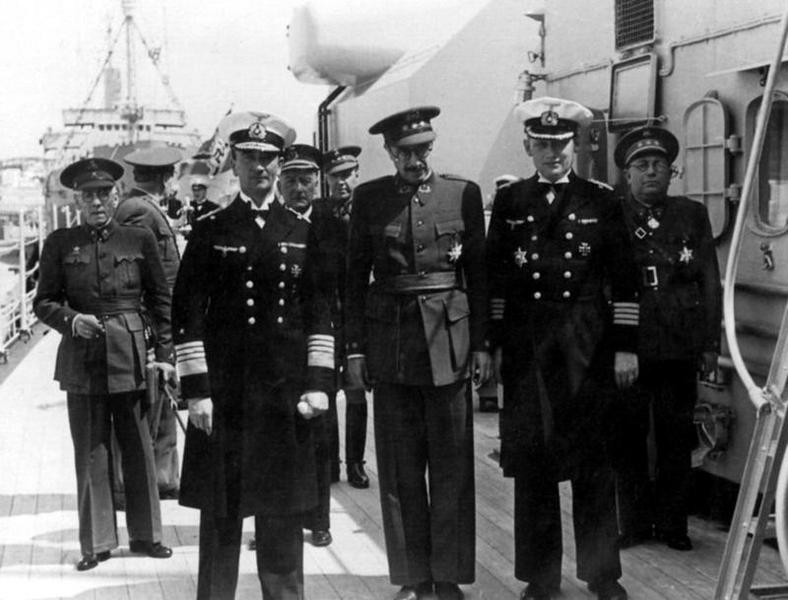
No. It is an intermediate category between the Commander and the Grand Cross. It is the plaque to be worn on the right side of the chest, instead of the left
1 -
1
-
The correct name of the Order is "Order Mehdauia". Created in 1926 in the Spanish Protectorate of Morocco to perpetuate the memory of the first Khalifa Muley el Mehdi Ben Ismail Ben Mohamed. About 130 insignias of these order were awarded in their different categories, mainly between 1937 and 1942 to german military an civilian people.
Always, according to the record books (manuscripts)
For Klüber (397), Plath (398), Schenk (402) and Riedel (403) were all later admirals.
4) Otto Ciliax:
Awarded the Comendador de número (Fajama). Record number 120. Date: 5.3.1938
6) Hermann von Fischel:
Thinking that the double concession is an error, I have chosen, without defined criteria, the last date. If at any time I find additional documentation or the date of imposition, it could change
1) Wilhelm Canaris:
My mistake. The correct date is 17.11.1938
Any pic of any of these show the Order of Mehdauia insignas are very welcome
2




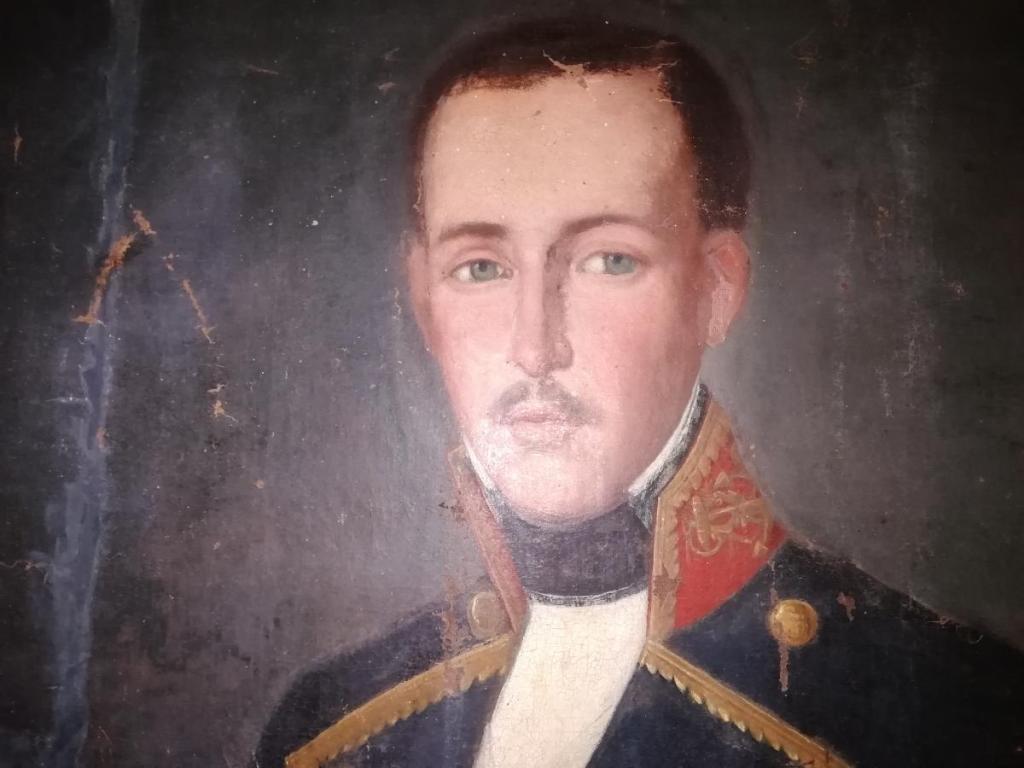

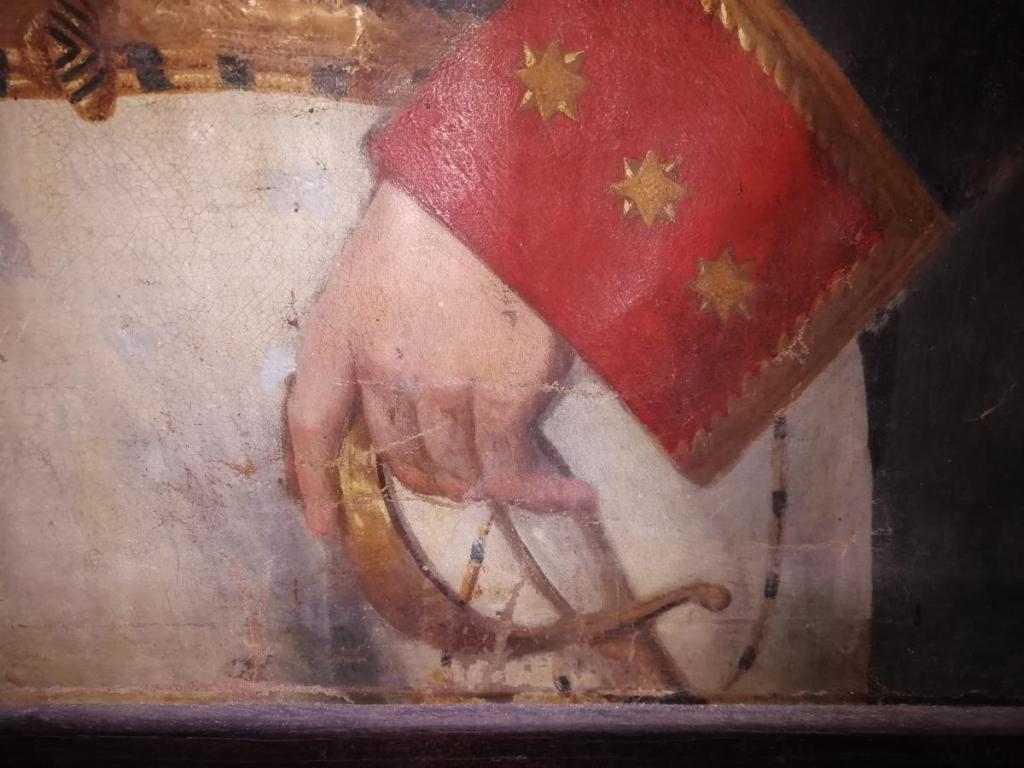
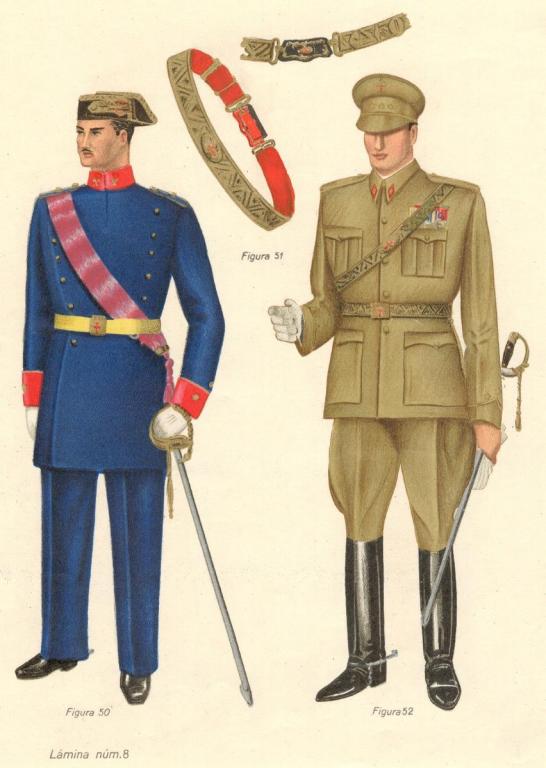
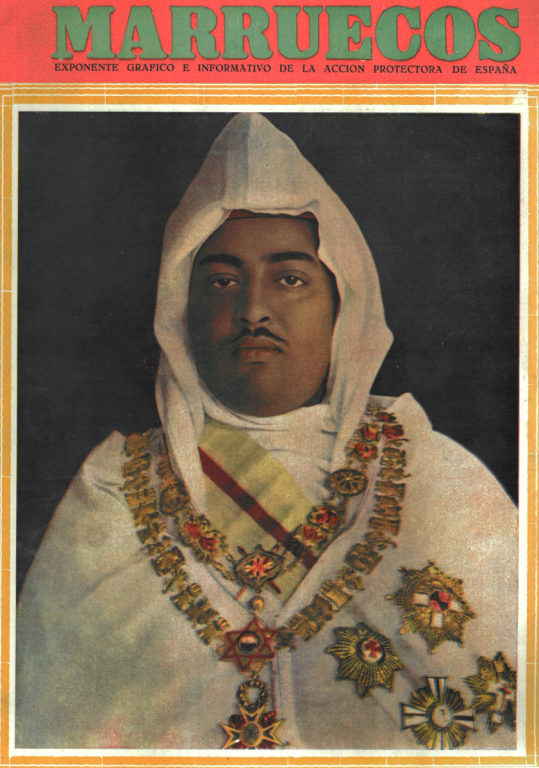
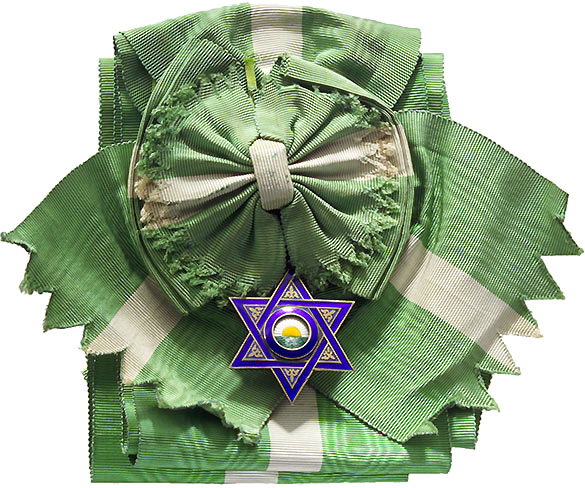


Visitor´s guide to the Army Museum (Toledo, Spain)
in Museums & Shows
Posted · Edited by Antonio Prieto
correct
If there is one thing that characterizes the collections of the Army Museum is the heterogeneity of its exhibits, keeping at present more than 36,000. It presents collections of very diverse origins, made up over the years, and that are witnesses of some of the most important events in the history of Spain. The Museum’s permanent exhibition comprises a careful selection of more than 6,000 items displayed over approximately 8,000 m2. Thus, with 21 halls, two different tours are organized and, at the same time, they are concurrent.
The Historical Tour and its seven halls, which are identified in red in the guide, intend to show the evolution of the Army from the Hispanic Monarchy to the present day. This articulation of the exhibition model developed for the historical discourse, promotes and enriches the reading of the report as it allows not only a linear chronological tracking, but it is possible to establish cross-cutting thematic readings that have as a basis the described routes.
The Thematic Tour and its thirteen rooms, identified in yellow, are oriented to the collections, complementing the historical discourse with the reading of other aspects related to the military institution, sometimes showing items belonging to the same discipline and others belonging to a multidisciplinary character.
The Alcazar has preserved within its walls a series of unique spaces that have been put in value so that the public can visit them and know them in situ. These places are the Alcazar Tour and are identified in the guide in blue color in the different halls. In each of them we will find an explanatory text with the history and the use they were given. The Imperial Chapel, included in this tour due to its size and architectural importance, has been incorporated as an independent exhibition space.
https://publicaciones.defensa.gob.es/media/downloadable/files/links/v/i/visitor_s_guide_to_the_army_museum.pdf